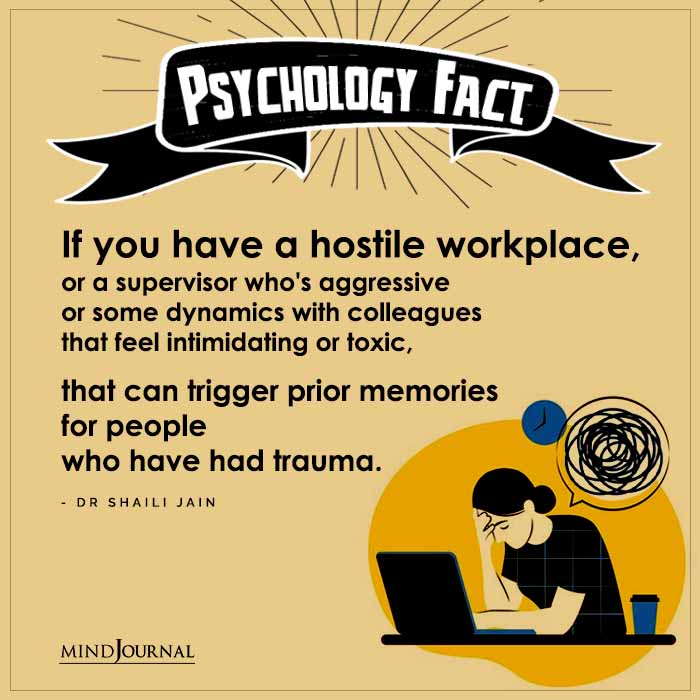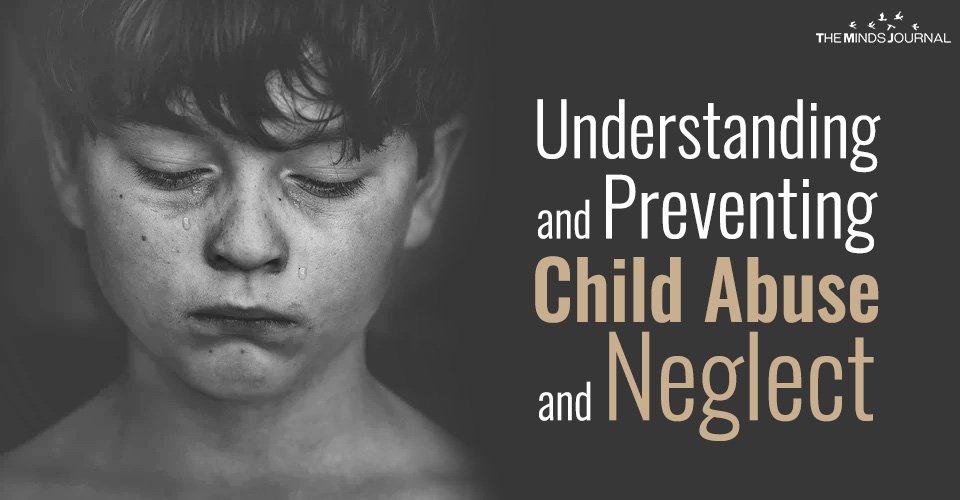Trying to deal with workplace bullying day in and day out is not an easy thing to go through. If leaving your job is not the solution for you, a few research-based strategies might help you deal with the bullies at work.
Key Points
- Toxic cultures are the top reason employees give for abandoning their employment.
- Less than 25% of workplace bullies suffer negative repercussions for their bad behavior.
- The best thing to do in response to workplace bullying is to leave. If that’s impossible, maintaining physical distance from the bully can help.
For many of us, work is not simply a place we go to secure insurance and collect a paycheck; it is a community in which we seek belonging and purpose. Unfortunately, for targets of workplace abuse, that employer that once nourished our spirit transforms into the primary source of our anxieties.
In fact, during this time aptly dubbed The Great Resignation, toxic cultures are the top reason employees give for abandoning their employment, a construct far outpacing concerns over wage gaps, flexible work hours, and opportunities for advancement (Sull, Sull, & Zweig, 2022).
Related: Toxic Work Culture: 10 Alarming Signs You Are Stuck In A Toxic Workplace
Advice For Targets Of Workplace Abuse
As a researcher who studies workplace bullying, I am often asked what strategies targets can use to escape the abuse. My first answer is not a particularly popular one, though I still stand by it.
Leave! For if you study the numbers, close to 70% of victims of workplace bullying eventually lose their job through firing, constructive discharge, transfer, or voluntary separation; whereas, less than 25% of bullies suffer negative repercussions for their bad behavior (WBI, 2021).
Moreover, bullying, at its core, is a cultural problem, more than an individual problem, and work cultures that bleed toxicity, are highly unlikely to change.
However, for a myriad of reasons, many employees don’t have the option to run; therefore, below I offer six research-driven strategies for navigating the warzone of workplace abuse.
6 Ways You Can Deal With Workplace Abuse And Adult Bullies
1. Allow Yourself To Grieve
In a capitalistic society, our identities as humans are often enmeshed with our job titles. What we do is how we define who we are. When a bully boss or peer steals that identity, it is quite jarring. At that moment, our assumptions about kindness and fair play are shattered, forcing us to reconstruct our views of the world at work (Janoff-Bulman, 1992).
This forced reconfiguring creates a great sense of loss. In order to mourn what was, we need to push back the walls to make space to grieve. Writing in a journal, engaging in meditative practice, and seeking the consultation of a therapist are all avenues for working through the loss (Lutgen-Sandvik, 2008).
Related: How To Deal With Adult Bullies: How To Effectively Resolve Conflicts In The Workplace
2. Create Temporal Distance
Bullies are a raucous bunch, hard to contain or direct. Victims of workplace abuse, however, can reclaim their power by retraining their thoughts and reducing their reactivity.
To create “temporal distance,” we ask ourselves: Will this bully’s egregious behavior matter to me and my career tomorrow, next week, or next year? If not, perhaps we place the pain she is causing up on a shelf and refuse to take the bait.
By disengaging and putting up emotional barriers between us and the bully, we provide ourselves with a reprieve from the hurt, allowing us to leave work and enjoy our son’s soccer game or an afternoon walk with a friend who truly has our back (Bruehlman-Senecal & Ayduk, 2015; Foulk, Woolum, & Erez, 2016; Moreno-Jiménez, Rodríguez-Muñoz, Pastor, Sanz-Vergel, & Garrosa, 2009).
3. Create Physical Distance
Like a virus, bullying spreads. In fact, studies show that rudeness is actually contagious. When a co-worker speaks with disdain, those around him are more likely to adopt his aggressive demeanor. When you are in close proximity to a toxic boss or co-worker, the emotional harm done is intensified.
By creating physical distance between you and the aggressor, you create a barrier to the potential hurt. Possible strategies for distance making include moving your office, finding a quiet room where you can escape, or setting out each day for a walk around campus to rejuvenate.
As you get to know your bully’s schedule, you can also begin to make a concerted effort to be gone when she is present, thus avoiding being injured by the shrapnel of her intermittent explosions (Foulk, Woolum, & Erez, 2016; White, 2004).
4. Use Friendship As A Buffer
Standing alone in the aftermath of workplace abuse is demoralizing and harm-inducing. Studies show that a friend on the job can act as a bulletproof vest, shielding you from the onslaught of attacks.
In fact, the friend does not even need to be a co-worker. Simply having people in your larger social circle you can confide in and trust significantly decreases trauma levels, degrees of depression, and physical illnesses typically associated with workplace abuse (Cuadros & Berger, 2016).
Related: How To Deal With Workplace Bullies: 10 Tips For Dealing With Negative Colleagues
5. Engage In Cognitive Rehearsal
Victims of workplace abuse tend to be generous with their time and forgiving of bad behavior. This graciousness, however, can come with a cost when dealing with workplace bullies.
In order to ward off unexpected attacks, cognitive rehearsal, or practicing responses to inappropriate questions, requests, and side comments helps to equip victims with a framework for dealing with intense interactions. Practicing these conversations in front of a mirror or with a trusted confidant enables victims to prepare in advance for confrontations.
Some of my favorite responses to cruel, inaccurate, or manipulative questions and comments include:
- “I will need to think about that before responding.”
- “Thank you for that insight but that is not my experience.”
- “I am not able to respond to gossip or anonymous complaints. If you would like to talk with me about concerns people are expressing to you, please share who said it, in what context, and on what date. Then I will circle back with those people directly. Without that information, it is simply gossip or hearsay, and I don’t respond to gossip or hearsay.”
These rebuttals create a pause and a space for victims of workplace abuse to reclaim their power, as they refuse to engage the bully’s poor behavior (Cuadros & Berger, 2016; Lutgen-Sandvik, 2006).

6. Enact Forms Of Resistance
When someone falls prey to workplace abuse, well-meaning advice-givers often suggest hitting back harder. Such behavior and response, however, are not in keeping with the gentle, kind, and highly ethical nature of the targets.
Fortunately, there are other ways to resist.
First, find a place to tell your story (Lutgen-Sandvik, 2006). As a researcher of workplace bullying, I have collected the stories of over 200 victims across states and countries. Inside those anonymous sharings, victims confide they felt empowered by telling the truth of what happened to them.
Second, embrace the pejorative labels. When victims of workplace bullying are called disruptors, whistleblowers, or problem employees, there can be great power in claiming the title with honor.
When that label is lobbed your way, think to yourself:
- “My innovative mind charges me to disrupt the circumstances contributing to long-standing, institutional problems.”
- “I called out bad behavior because my moral compass demands I speak out against injustices done to my students, patients, or clients.”
- “Change agents by nature are problematic because positive community transformation doesn’t happen by operating in the confines of the status quo.”
Third, document everything. Keep a running log of comments said, work sabotaged, and manipulative interactions aimed at derailing your career. Such documentation allows you to speak in specifics when reporting the abuse.
Related: Dealing With Adult Bullies: How To Deal With The 7 Most Dangerous Work Personalities
Therefore, instead of telling the aggressor’s boss or human resources that you are being bullied, you say, “Let me share with you the following 10 things that happened over the last month. I am interested to hear your interpretation and response to what I share” (Lutgen-Sandvik, 2006).
In closing, since at its core, bullying is a work cultural problem more than an individual problem, when possible, leave a toxic environment. You deserve to work in a community that feeds your spirit and invites you to do the good work you were called to do.
However, when such a departure is not possible, give yourself time to grieve the abuse, create temporal and physical distance between you and the bully, allow your close friends to serve as a buffer, take time to rehearse responses to toxic encounters, and enact forms of resistance in order to reclaim your personal power.
Want to know more about how you can deal with workplace bullying? Check this video out below!
References:
Bruehlman-Senecal, E., & Ayduk, O. (2015). This too shall pass: Temporal distance and the regulation of emotional distress. Journal of Personality and Social Psychology, 108(2), 356–75. Cuadros, O., & Berger, C. (2016). The protective role of friendship quality on the wellbeing of adolescents victimized by peers. Journal of Youth and Adolescence: A Multidisciplinary Research Publication, 45(9), 1877–1888. Foulk, T., Woolum, A., & Erez, A. (2016). Catching rudeness is like catching a cold: The contagion effects of low-intensity negative behaviors. The Journal of Applied Psychology, 101(1), 50–67. Janoff-Bulman, R. (1992). Shattered Assumptions: Towards a new psychology of trauma. Free Press. Lutgen-Sandvik, P. (2008). Intensive remedial identity work: Responses to workplace bullying trauma and stigmatization. Organization, 15(1), 97–119. Lutgen-Sandvik, P. (2006). Take this job and …: Quitting and other forms of resistance to workplace bullying. Communication Monographs, 73(4), 406–433. Meisenbach, R. (2010). Stigma management communication: A theory and agenda for applied research on how individuals manage moments of stigmatized identity. Journal of Applied Communication Research, 38(3), 268–292. Moreno-Jiménez, B., Rodríguez-Muñoz, A., Pastor, J. C., Sanz-Vergel, A. I., & Garrosa, E. (2009). The moderating effects of psychological detachment and thoughts of revenge in workplace bullying. Personality & Individual Differences, 46(3), 359-364. Sull, D., Sull, C., & Zweig, B. (2022). Toxic culture is driving the great resignation. MIT Sloan Management Review. White, S. (2004). A psychodynamic perspective of workplace bullying: Containment, boundaries and a futile search for recognition. British Journal of Guidance & Counseling, 32(3), 269–280. The Workplace Bullying Institute (WBI) /Zogby International. (2017). U.S. workplace bullying survey. Retrieved from the Workplace Bullying Institute’s website.
Written By Dorothy Suskind Ph.D Originally Appeared On Psychology Today










Leave a Reply